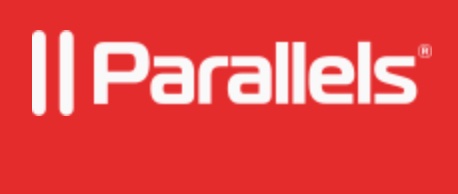Parallels has launched an update to Parallels Mac Management (parallels.com/mac-management), the product that extends Microsoft System Center Configuration Manager (SCCM) functionality to Macs. Parallels Mac Management enables IT departments to discover, enroll and manage Mac machines just as they do existing PCs – all through a single pane of glass.
The latest version offers new software distribution capabilities that benefit both IT administrators and end users, including the ability for Mac users to install approved software, features for planning hardware refresh cycles, improvements that empower IT administrators to make their Mac computers more secure using advanced encryption techniques, and a streamlined process for enrolling Mac computers in SCCM on large corporate networks.
Parallels tackles the perennial problem of Mac management head-on with Parallels Mac Management 3.1, enabling everyone from IT administrators to system architects to CIOs to leverage their current SCCM infrastructure and extend it to Mac without unnecessary costs, according to Jack Zubarve, president of Parallels.
Users are empowered to:
[if !supportLists]· [endif]Manage and control Mac computers by leveraging their existing SCCM infrastructure, resources and talent
[if !supportLists]· [endif]Gain full visibility into the Mac computers coming onto their networks
[if !supportLists]· [endif]Take control and take action on those machines as they would on PCs – all while working in the same familiar environment
[if !supportLists]· [endif]Easily leverage Mac technologies, such as the configuration manager, to secure Mac computers
[if !supportLists]· [endif]Deploy and manage Parallels Desktop Enterprise Edition, as well as other virtual machines – key for Mac users who need access to business-critical Windows apps
[if !supportLists]· [endif]Manage Macs running Mac OS X 10.10 Yosemite, via Microsoft SCCM
A recent winner of Microsoft’s Best of TechEd 2014 award in the Systems Management category, Parallels Mac Management 3.1 includes a number of new features:
[if !supportLists]· [endif]Application Portal for Mac, which allows Mac users to install approved software even without administrative rights
[if !supportLists]· [endif]Mac warranty (AppleCare) status reporting, which lets IT plan hardware refresh cycles better
[if !supportLists]· [endif]Support for unique FileVault 2 personal recovery keys and the ability to escrow these keys, which increases security by encrypting Mac computers on the network
[if !supportLists]· [endif]Support for PKI and HTTPS, which enables support for an SCCM infrastructure operating in secure HTTPS mode
[if !supportLists]· [endif]Network discovery UI improvements, which enable the use of SCCM site boundary information in network discovery configuration settings—this means huge time savings for IT administrators who need to scan large corporate networks
Additional features include:
Asset Inventory
Users can: scan the corporate network automatically to discover Mac computers, then auto-enroll them in SCCM; gather hardware and software inventory of all Mac machines on the network; and leverage native Microsoft SCCM reports to view information about Mac computers.
Configuration Management
Users can: enforce compliance via extended SCCM configuration items: Mac OS X configuration profiles and shell scripts.
Software and Patch Deployment
There is now central management and installation of software packages and patches; support for deployment of a wide range of software packages (.dmg, .pkg, .iso, .app, scripts, and stand-alone files; and support for silent deployment and deployment with user interaction
Mac OS X Image Deployment via SCCM
This provides integration of Mac OS X image deployment into SCCM workflow and deployment of preconfigured, company-standard OS X installation on new Mac computers
Parallels offers resources for IT departments as they go through the proof of concept and implementation process for Parallels Mac Management. These include a hosted test lab program that lets IT professionals test Parallels Mac Management before installing it, and a JumpStart Program that includes Parallels Mac Management for one year on up to 100 Mac computers, as well as 10 hours of assisted installation and configuration support.
Parallels Mac Management is part of a larger suite of products for businesses of all sizes that work in cross-platform environments. Other offerings include Parallels Access for Business (parallels.com/access-business), a remote access application for iPad, iPhone and Android devices that lets people run PC and Mac applications on their devices with touch gestures.
Parallels Desktop for Mac Enterprise Edition (parallels.com/enterprise) provides a way to run Windows apps on the Mac. Using Parallels Desktop Enterprise Edition, IT managers can support Windows applications for Mac users with a configurable, policy-compliant solution that fits into existing business processes.
Parallels Mac Management is available immediately and starts at US$30 annually per Mac. Parallels Access for Business starts at $49.99 per year for five computers. Parallels Desktop for Mac Enterprise Edition starts at $100 per year per Mac.

